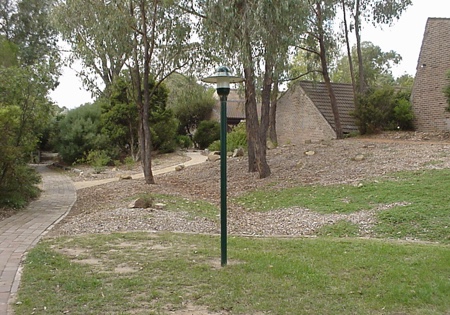Michael Dysart

Urambi Village (1974)
Michael Dysart is an important architect of the second half of the twentieth century in Australia and a leading practitioner of the late twentieth century Sydney regional style of architecture. He played an important role in the development of public buildings in NSW, notably educational buildings, and affordable housing, specifically in the development of modern architect designed project homes and co-operative communal housing in NSW and the ACT.
His most important works in Canberra are Urambi Village and Wybalena Grove. Both are significant ACT outcomes of a rare communal and co-operative approach to medium density housing development.
Born in 1934, Dysart won one of the small number of NSW Government Architect traineeships in 1955 and on graduating from the University of Sydney in 1958 he was the last to join of the four key trainees who became part of the design office working under Harry Rembert. The other members of the design office at the Government Architects were Peter Weber, who later became the Government Architect, Ken Woolley, who later became a partner at Ancher Mortlock Murray and Woolley, and Peter Hall, who later combined with others to take over the Sydney Opera House from Jorn Utzon. Dysart remained with the NSW Department of Public Works until 1969.
NSW Government Architects
The NSW Government Architects were responsible for designing public schools, amongst other buildings. During the period from 1947 to 1972 the high school student numbers in NSW grew from around 80,000 to 280,000. The High School Programme (within the NSW Government Architects office) was a major thrust.
Dysart joined the Schools Section in 1964 and was responsible for various programs including the Secondary School Wyndham scheme, a program to build some 43 high schools in three years. One of the schools was highly commended in the 1967 Sulman Award and the Taree Technical College received the Blackett Award in 1965.
Michael Dysart developed the doughnut design solution for high schools with a series of pavilions with central courtyards. Dysart was regarded as one of the most productive and impressive of the designers from the Design Room. Unlike many of the young modernist architects of the middle period of the twentieth century in Australia, Dysart did not travel to Europe or take up scholarships in the U.S until 1976, due to the unique design opportunities given to him by the NSW Public Works Department. His understanding of international trends was based on references in publications and not first hand observation.
Project housing
With Ken Woolley, Dysart designed the Lowline project home for the project building company Pettit & Sevitt, established in 1961. This was the first architect designed project home for the company and was initially displayed at North Rocks, Sydney, in 1963. In Canberra there are many examples of the Pettit & Sevitt Lowline. There are also a number of project homes he designed with companies such as Aspect and Habitat after his relationship with Pettit & Sevitt ended. These are mainly in Aranda, Kambah and Weston.
Dysart’s interest in project housing led to innovative housing co-operatives in Sydney as well as the two major projects in Canberra. He has also designed townhouses for the Housing Commission in Woolloomooloo, 1977.
Later work
Dysart joined with Peter Bell to form the practice of Michael Dysart & Partners in 1970. To expand the range of projects, the firm merged with the Queensland based Davis Heather Group, creating Davis Heather & Dysart, to design hotels and resorts including the Regent Hotel in Sydney and the Hilton Hotel in Cairns and other commercial buildings in New South Wales and in Queensland. The firm subsequently was known again as Michael Dysart & Partners. By the early 1980s the firm had five Directors and a total staff of 35.
Awards
Dysart himself, or in association, has received a number of major architectural awards including:
- RAIA NSW Blackett Award, 1965, for the Taree Technical College
- RAIA NSW Sulman, 1967, Highly Commended Award for the Ryde High School
- RAIA NSW Chapter Project House Design Awards, 1968, $10,000–$13,000
- ACT Chapter C S Daley Medal, 1977 and the RAIA Twenty-Five Year Award, 2002, for Urambi
- AIA ACT Chapter Enduring Architecture Award 2019, for Wybalena Grove
Houses in Canberra
- 13 Wolgal Place, Aranda (1969)
- Urambi Village Housing Cooperative, Crozier Circuit, Kambah (1974)
- Cook Housing Cooperative, Wybalena Grove, Cook (1974)
Other works
- Polish Millennium Church, Marayong, NSW (1964)
- Taree Technical College, Taree, NSW (1965)
- Ryde High School, Ryde, NSW (1967)
- Stewart House, Curl Curl, NSW (1969)
- Housing Commission Townhouses, Woolloomooloo, NSW (1977)
Source
- Australian Institute of Architects RSTCA citation for Urambi Village